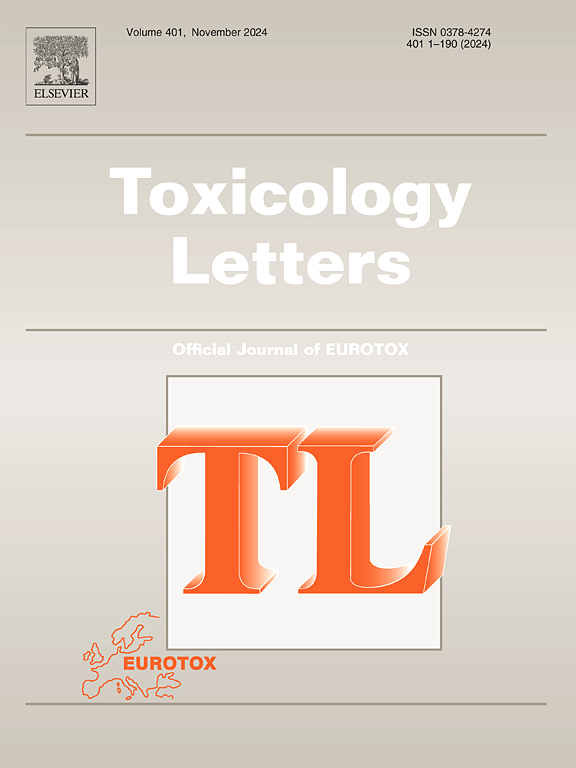二苯醚对斑马鱼胚胎的亚致死效应:发育、形态学、心脏和神经毒性影响。
IF 2.9
3区 医学
Q2 TOXICOLOGY
引用次数: 0
摘要
2009年,联合国环境规划署将多溴联苯醚(PBDEs)列为一类新兴的持久性有机污染物。在环境中,通过多溴二苯醚的降解可以形成较少的溴化二苯醚。在本研究中,斑马鱼胚胎仔鱼分别暴露于1.28mg/L (1/4 LC50)和2.57mg/L (1/2 LC50)的二苯醚(DE)长达96h。研究了亚致死浓度DE对斑马鱼急性发育毒性、形态、体生长、心率、静脉-球动脉(SV-BA)距离、自发运动和感觉运动反应的影响。与对照相比,DE显著降低了成活率和孵化率,且呈浓度依赖性。DE暴露96h后,斑马鱼幼虫出现不同类型的形态异常,如心包水肿、脊柱畸形、尾巴弯曲、卵黄囊水肿、身体弯曲、尾巴变形等。发现暴露于DE的斑马鱼幼虫心率显著降低,而SV-BA距离显著升高。与对照组相比,DE暴露组的神经毒性指标,即感觉运动反应和自发尾卷运动显著降低。本研究将有助于了解DE在斑马鱼生命早期的有害影响。本文章由计算机程序翻译,如有差异,请以英文原文为准。
Sublethal effects of diphenyl ether on zebrafish embryo: Developmental, morphological, cardiac and neurotoxic implications
In 2009, the United Nations Environment Programme classified the polybrominated diphenyl ethers (PBDEs) as an emerging class of persistent organic pollutants. In the environment, less brominated diphenyl ethers can be formed by the degradation of PBDEs. In the present study, zebrafish embryo-larvae were exposed to 1.28 mg/L (1/4 LC50) and 2.57 mg/L (1/2 LC50) of Diphenyl ether (DE) upto 96 h. Effects of sublethal concentrations of DE on acute developmental toxicity, morphology, body growth, heart rate, sinus venosus- bulbus arteriosus (SV-BA) distance, spontaneous movement and sensorimotor response in zebrafish larvae were studied. DE significantly decreased the survival rate and hatchability rate in a concentration dependent manner compared to control. Different types of morphological abnormalities such as pericardial edema, spinal deformity, bent tail, yolk sac edema, crooked body, distorted tail deformities were reported in zebrafish larvae after 96 h of DE exposure. Heart rate was found to be significantly decreased whereas the SV-BA distance was found to be significantly elevated in DE exposed zebrafish larvae. The neurotoxicity markers i.e., sensorimotor response and spontaneous tail coiling movement, were found to be significantly decreased in DE exposed groups when compared to control group. The present investigation will help to understand the detrimental effects of DE in the early life stage of zebrafish.
求助全文
通过发布文献求助,成功后即可免费获取论文全文。
去求助
来源期刊

Toxicology letters
医学-毒理学
CiteScore
7.10
自引率
2.90%
发文量
897
审稿时长
33 days
期刊介绍:
An international journal for the rapid publication of novel reports on a range of aspects of toxicology, especially mechanisms of toxicity.
 求助内容:
求助内容: 应助结果提醒方式:
应助结果提醒方式:


